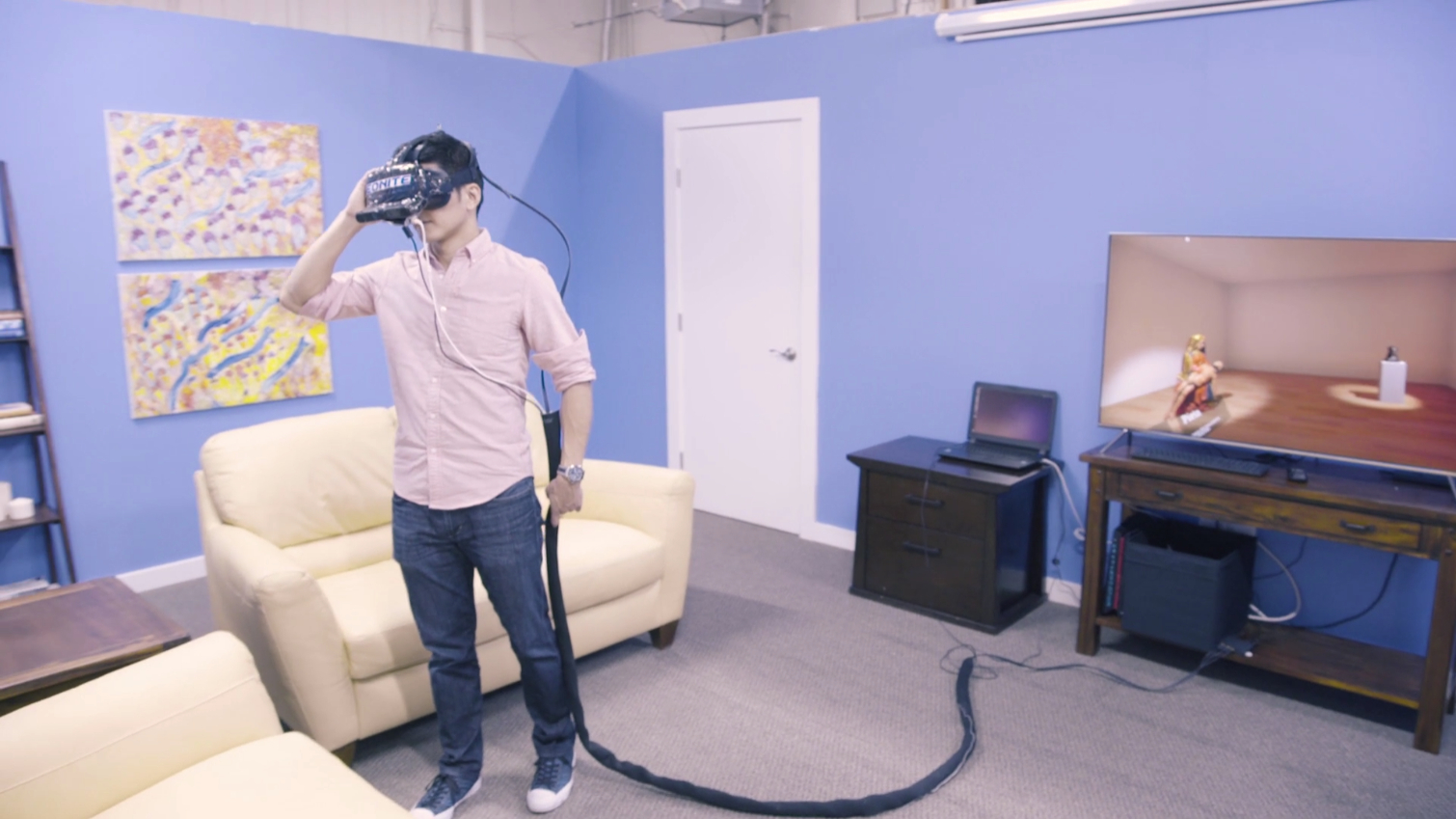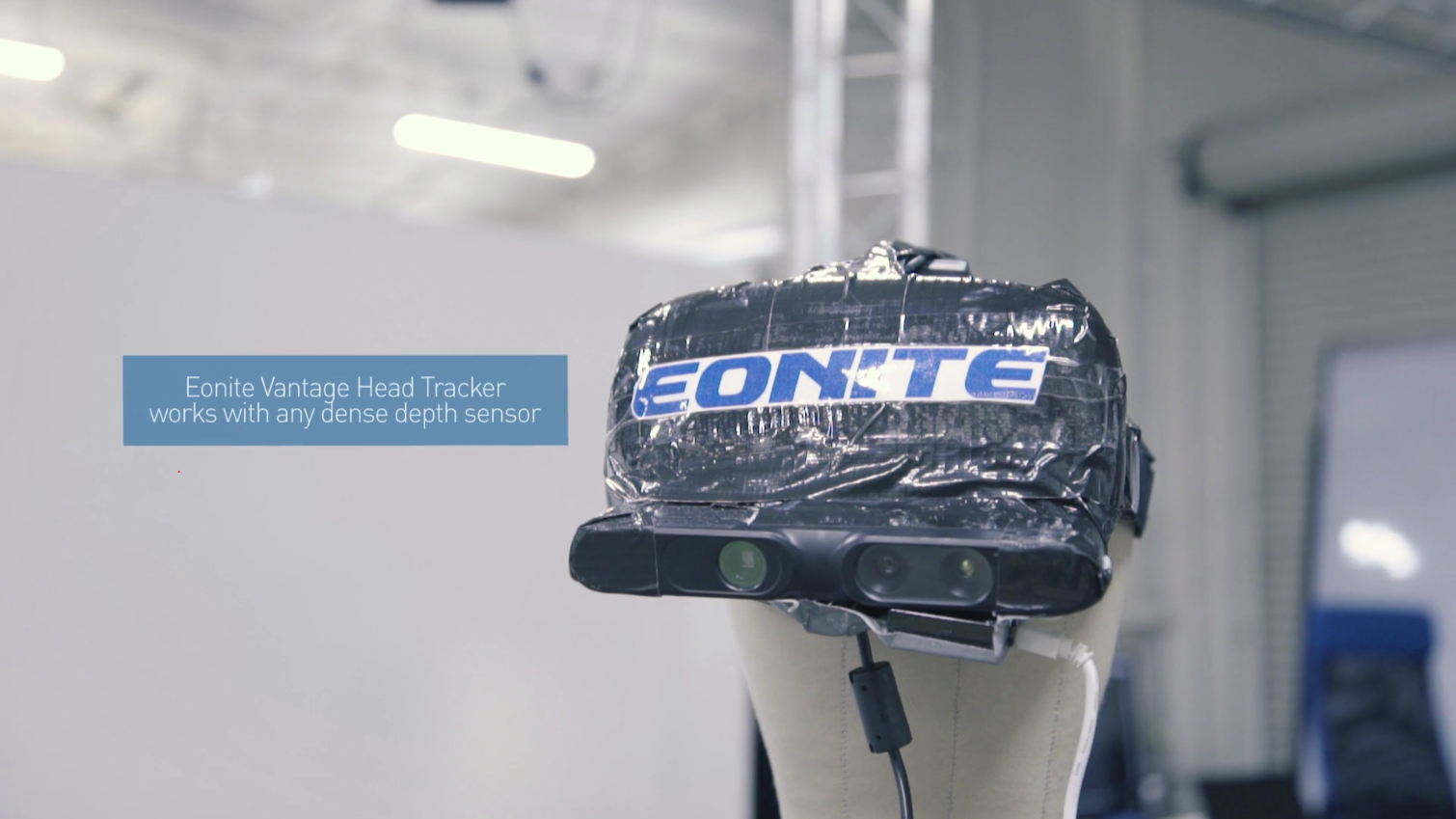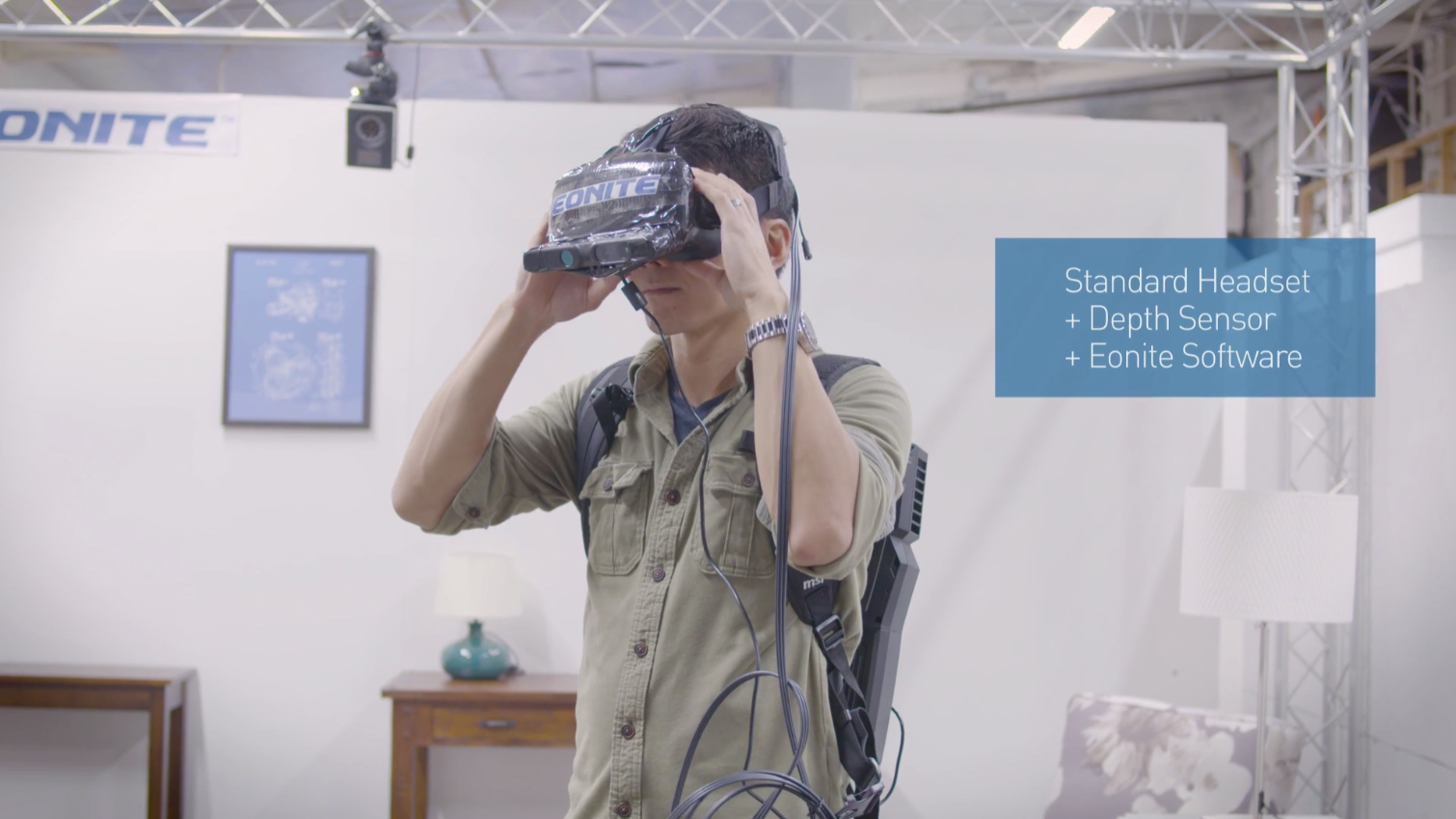Inside-Out Position Tracking Software For VR, AR Device OEMs: Eonite Announces Vantage Head Tracker
Eonite, a company that specializes in computer vision technology, revealed a multi-platform software package that enables 6-degrees of freedom (6DoF) inside-out tracking capabilities for any device with depth sensing cameras, such as VR and AR HMDs, drones, or robots.
Eonite Vantage Head Tracker is a set of camera agnostic and device agnostic software algorithms designed to enable accurate, low-latency inside-out positional tracking for use with head mounted VR and MR displays running on “tablet-class GPUs.”
“Eonite enables the fourth wave of computing - spatial interfaces like VR/AR/MR - to gain widespread adoption,” said Dr. Anna Petrovskaya, Co-founder of Eonite. “Computers perceiving the real world like the human eye - that’s what it takes for these experiences to feel ‘real’ enough for common usage, and that’s the impact we’re enabling at Eonite.”
Eonite’s Vantage Head Tracker technology combines depth information from embedded cameras and internal IMU sensors to track your headset’s position in 3D space. Vantage works with any camera system that offers depth information, such as a Microsoft Kinect, laser depth sensor, or stereoscopic camera system. The freedom of camera choice allows hardware manufacturers to bring manufacturing costs down to a minimum by using inexpensive components.
“With Eonite inside, virtual reality can become more affordable, easier to setup, and more immersive for users. Our 6DOF (degrees of freedom) software is leading the industry in all five key commercialization areas - accuracy, latency, robustness, power efficiency, and price,” said Youssri Helmy, CEO and founder of Eonite. “Eonite Vantage Head Tracker is a fundamental requirement in the tech stack, and will be an industry-defining solution for VR/AR headsets to accurately operate in the real world.”
Eonite’s software algorithms enable spatial tracking with sub-millimeter accuracy and sub-15 millisecond motion-to-photon latency. Eonite said the software is also tuned for low power consumption to conserve battery power on mobile devices.
Eonite’s Vantage Head Tracker software allows for static and dynamic real-time obstacle detection, which can be used to enhance mixed reality experiences, or as a safety mechanism for room-scale VR. Vantage Head Tracker software is also capable of keeping track of multiple room environments, which allows for “home-scale” experiences.
Get Tom's Hardware's best news and in-depth reviews, straight to your inbox.
Eonite rigged up a prototype to show off the Vantage Head Tracker technology that included a depth camera attached to an HTC Vive. Eonite paired its hacked-together inside-out-tracked Vive with a backpack PC, which allowed the company to demonstrate “home-scale” VR in action. The company’s prototype is strictly an internal test case, though. Eonite’s Vantage Head Tracker technology is meant for OEM HMD manufacturers and won’t be offered as an upgrade kit for existing VR HMDs.
Helmy wouldn’t divulge what Eonite charges for a license to use the Vantage Head Tracker software because it varies per customer.
“Our model is software licensing, but the pricing is on a per case basis because it depends on lots of factors,” said Helmy. “It’s a partnership model where we become part of the platform. We don’t just offer tracking. We offer the possibility of making virtual reality and mixed reality experiences. There’s optical illusions. We have a true SDK that platform developers can leverage.The algorithm is camera agnostic, but it’s not plug-and-play. For every HMD, we would be working with the OEM to fine tune and calibrate it.”
Eonite’s Vantage Head Tracker SDK is a new addition to the company’s previously released Reality Insight SDK, which services the “automotive, robotics, and manufacturing” industries. Eonite’s Reality Insight SDK allows developers in those industries to leverage 3D simultaneous localization and mapping (SLAM) and high-precision navigation. Vantage Head Tracker adds support for “home-scale, real-time 3D scanning and reconstruction, supporting persistent virtual content, occlusions and shadows.”
Eonite is “working with select manufacturers, already,” but Helmy wouldn’t say which companies those are. The company founder did offer that “the first HMD [to leverage Vantage] will be a tethered device. Future products will be mobile.” He also noted that “users can anticipate much more in the coming 12 to 18 months.”
Eonite’s Vantage Head Tracker isn’t yet readily available, but the company is using this announcement as a general invitation for OEMs that are interested in participating to inquire about licensing.
Kevin Carbotte is a contributing writer for Tom's Hardware who primarily covers VR and AR hardware. He has been writing for us for more than four years.
-
problematiq That's funny, I was just thinking about this on my way to work this morning. "why don't they use multiple camera's and track movement for positional tracking." I didn't think about latency, but it appears that's not a problem.Reply -
problematiq One problem I could forsee, How do you tell the device where position x-0 y-0 z-0 is? You can track position by movement, but can you track/reset your starting position?Reply
I suppose you could put a sticker on the wall. -
bit_user This is functionally equivalent to Google's Tango, MS' Hololens, and whatever Intel is using for their AR/MR HMD. Not to say it's not faster, more accurate, or doesn't do more. But, the core functionality is the same.Reply
BTW, it's no coincidence they didn't demo this in a room with blank, white walls. I'm sure the bookshelf was there to aid tracking.
The origin is arbitrary. What's important is that the device maintains a stable coordinate frame. If you want to map a different point as the origin, that's just a simple transform you can apply to the pose determined by their SLAM system.19147606 said:One problem I could forsee, How do you tell the device where position x-0 y-0 z-0 is? You can track position by movement, but can you track/reset your starting position?
Think of it like this: if you want to tell the app "treat this as the home position", it can take the pose (position + orientation) and simply offset all future pose readings by that amount. -
problematiq Reply19227125 said:This is functionally equivalent to Google's Tango, MS' Hololens, and whatever Intel is using for their AR/MR HMD. Not to say it's not faster, more accurate, or doesn't do more. But, the core functionality is the same.
BTW, it's no coincidence they didn't demo this in a room with blank, white walls. I'm sure the bookshelf was there to aid tracking.
The origin is arbitrary. What's important is that the device maintains a stable coordinate frame. If you want to map a different point as the origin, that's just a simple transform you can apply to the pose determined by their SLAM system.19147606 said:One problem I could forsee, How do you tell the device where position x-0 y-0 z-0 is? You can track position by movement, but can you track/reset your starting position?
Think of it like this: if you want to tell the app "treat this as the home position", it can take the pose (position + orientation) and simply offset all future pose readings by that amount.
It becomes a problem when you boot the device while looking at anything less than level elevation. Then your home position then becomes off canter.
-
bit_user Reply
I don't follow.19229492 said:It becomes a problem when you boot the device while looking at anything less than level elevation. Then your home position then becomes off canter.
For one thing, these systems can usually detect the ground plane (and a lot of IMUs seem to have magnetometers, which also help detect orientation). If they wanted it to auto-level, they certainly could.
-
problematiq Reply19230756 said:
I don't follow.19229492 said:It becomes a problem when you boot the device while looking at anything less than level elevation. Then your home position then becomes off canter.
For one thing, these systems can usually detect the ground plane (and I'm not sure exactly what they get out of the IMU). If they wanted it to auto-level, they certainly could.
You're talking about the ability to sense what is level solely based on a Kinect sensor. the HMD's themselves cannot necessarily tell what is level and what is not. Some have a level sensor, sure. But other HMD's rely on external camera's/lasers to tell the HMD where it is and where it is pointing.
-
bit_user Reply
From the article:19230821 said:You're talking about the ability to sense what is level solely based on a Kinect sensor.Eonite’s Vantage Head Tracker technology combines depth information from embedded cameras and internal IMU sensors to track your headset’s position in 3D space.
If the IMU has a 3-axis magnetometer, then it can trivially get orientation. Otherwise, it has to rely on ground plane detection. That should work well enough, for most cases.
-
problematiq Reply19230857 said:
From the article:19230821 said:You're talking about the ability to sense what is level solely based on a Kinect sensor.Eonite’s Vantage Head Tracker technology combines depth information from embedded cameras and internal IMU sensors to track your headset’s position in 3D space.
If the IMU has a 3-axis magnetometer, then it can trivially get orientation. Otherwise, it has to rely on ground plane detection. That should work well enough, for most cases.
BAH! it has been a long time since I read the article. You are correct sir.


